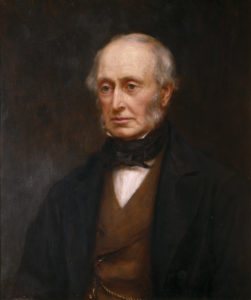Today I popped over to Newcastle to visit the Tyne and Wear Archives, based in the Discovery Centre museum, and spent the day perusing documents they keep which belonged to Lord and Lady Armstrong of Cragside. I was looking for several things:
-
information about the electrical equipment and systems in use at Cragside in the period;
-
opinions or responses regarding the electric lighting from visitors or guests, or from Lady (Margaret) Armstrong herself;
-
key dates for the timeline which will form a part of the digital interactive on which I am currently working (and on which more in a later post);
-
anecdotes or fun little stories about electricity in the house which might help to illustrate the video content we are producing in August.

As with any archival research, I ended up ticking a few of these boxes, not ticking others, and finding some items which I had not expected. For starters, I found a lovely little testimonial to Lord Armstrong’s character, from a family friend by the name of Emilia de Riano, resident in Granada, Spain, who noted in a letter to him in October 1884 that he was “the dearest creature in the world”.
Information about Cragside’s electrical equipment and some relevant dates were easy enough to find, such as details of the hydroelectric dynamo and its associated batteries. One letter also noted that there was enough water power from the dynamo to produce hydroelectricity to light the house 10 months out of the year; “the remaining two months however are uncertain”. Pendant (hanging) light fittings were installed in the drawing room around July 1884, and plans were being drawn up to electrically light the stables – which had previously been lit by gas – in 1903 in order to reduce the gas bill.
What I was slightly surprised not to find was any mention of Cragside’s hydroelectricity or electric lights in correspondence from those who had recently visited and stayed in the house. Even when this would have been incredibly novel and unusual, in 1884 (a year which, due to the unfathomable expediencies of the Law of Archival Serendipity, was quite generously represented), there was nothing in any letters which otherwise praised the beauty and wonder of the property.
However, something else I found, also from 1884, might help to explain this absence. It appears that in this year Lord Armstrong was having trouble with several of the lamps in the house, and would either have not been using them, or may have sent them to the Edison Swan Company to be examined and replaced, as suggested by a rather apologetic letter from one of the company’s representatives. This provides some nice Cragside-specific support for one of the themes which Graeme Gooday brings out in Domesticating Electricity, that electric lighting was not an unproblematic technology, and early users often found the system to be quite unreliable.
Finally, I was most gratified to find, tucked away at the end of a bundle of letters, an unsigned, undated poem in praise of Cragside. It didn’t mention electricity, as it may well have pre-dated the house’s electrical installation entirely.
O Cragside most beautiful place
On the whole of this earth’s fine face…
…its beautiful apples so red
on which you’re so bountifully fed
And its beautiful fish
That look nice in a dish”
It continued:
And then upon the moor
you find the bird pool
That is the grouse
so far from the house
Then in the fields round about
you find the partridge in and out
Then we have the blackbird sweet
come in autumn as a great treat”
Perhaps it is little wonder the author preferred to remain anonymous to posterity.